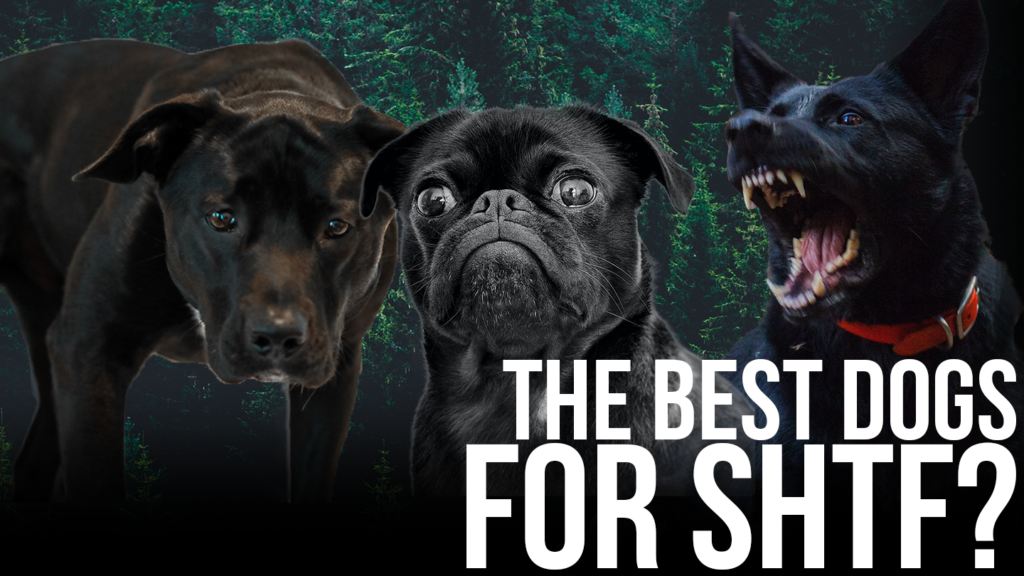Dogs can be a great additional layer of security for your home and person. The keyword is “additional.” An animal will never replace a firearm or self-defense skills, and if you live in a bad area, it would be better to move if possible. Lots of people get hung up on the more exotic (read: expensive and hard to find) dog breeds that look the most intimidating and seem the most “cool.” Here is a more practical list of some of the more common breeds best for various needs and situations.
Urban
You should move. Seriously.
Suburban
Watchdogs (alarm systems):
These dogs don’t stop a bad guy, but they can draw a lot of attention to what he’s doing. Get a smaller, healthy dog, and it will save a lot of money on dog food, vet bills, and so forth. Quiet breeds like whippets won’t fit the bill here, so aim for a dog that barks…but please teach it how to stop barking.
Boston Terriers—A popular choice due to that “gentlemanly” personality. Unlike most, these dogs are usually quiet but will bark when something is wrong. They can have some health problems.
Chihuahua—One of the most hated terrors on God’s green earth. Also, one of the healthiest, most long-lived breeds you could pick.
Miniature Schnauzer—These dogs boast abnormally sharp hearing of all things, and are the bane of vermin.
Toy poodles—Very trainable, low-shedding, easy on allergy sufferers.
Rescue mutt—Most smaller yappers will do the trick. Find one with a personality and energy level that fits your family.
Intimidators (visual deterrents)
Dogs in this category are like watchdogs on steroids. They may not come to your aid in a crisis, but they look the part, which may be enough to cause a would-be attacker to move on. Large dogs with deep barks, particularly dark-colored dogs, do the job best. Pricked or cropped ears are favorable, and bully breeds tend to have an “intimidating” reputation. Again, a rescue from the shelter could fill this role.
Guard dogs (manstoppers):
These dogs are meant to buy you time, not solve your problems for you. They require diligent training and socialization to be effective and not a liability. If you have the time, energy, and money to invest in these dogs, and they are the next logical step in protection, then here are some of the more common breeds that can back you up in a bad situation:
Bullmastiffs—Lazy, slobbery, loving lumps…until something goes wrong. They require much less exercise than the other breeds on this list and tend to protect the home even in the absence of the owner. Stubborn.
Doberman Pinschers—The only dog bred specifically for protection. A great visual deterrent also as they are very recognizable when their ears are cropped, and they have a Hollywood-made reputation for being “scary.” Clingy, relatively clean dogs due to their short, single-layered coat.
German Shepherds—A popular choice, though the training is required for the dog to know what to do in a crisis. Trainable and common in the US, the best students within this breed often obtain positions on the police force. This herding breed is prone to hip dysplasia and usually sheds quite a bit.
Giant Schnauzers—More drive, descended from solid, all-around farm dogs. Regards taking care of their charges seriously. Low shedding.
Rottweilers—Another recognizable “guard” dog. These were bred to be drovers, but today they’re more often used in search and rescue and as protective yet affectionate home companions.
Rural
Livestock Guardian dogs (requires diligent training & socialization):
These dogs are specifically for guarding your flocks, herds, property, and family. They are very independent and truly need to be in wide-open spaces as they will wander and bark—a lot, and usually at night. If you live in a very rural area with a lot of predator pressure, these are the coworkers for you. It is usually recommended to have more than one.
Livestock Guardian breeds available in the United States include the Akbash, Anatolian Shepherd, Caucasian Shepherd Dog, Great Pyrenees, Komondor, and Maremma Sheepdog. Mixes between two or more of these breeds are not uncommon.
A dog can be a great addition to your security protocol, but please remember that it is not a substitute for personal training and responsibility. Dogs can be great early warning systems, deterrents, and help in a crisis, but they cannot replace a firearm and basic defensive competence.


